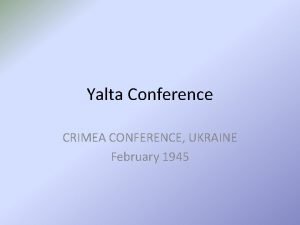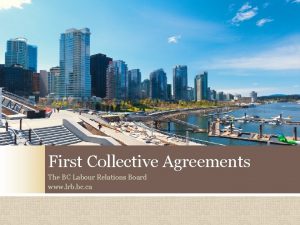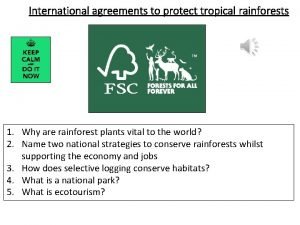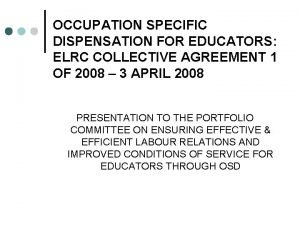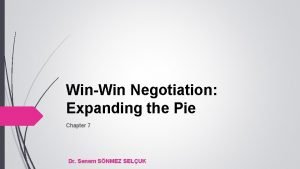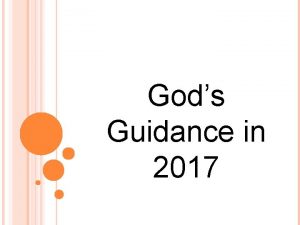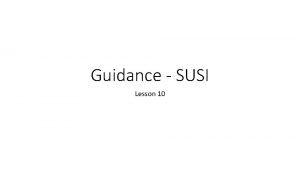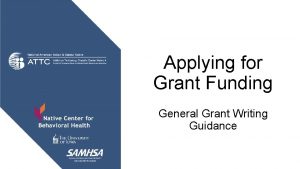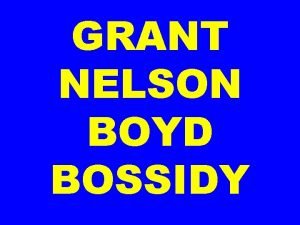Partnership grant guidance What is it Partnership agreements









- Slides: 9

Partnership grant guidance

What is it? • Partnership agreements are intended to formalise those often informal arrangements with proper grant contracts in place. They are a contribution towards the core purpose of the organisation • It is a recognition that the organisation in its day to day work delivers against joint priorities and may save the funder money in the long term. • Agreements will state the joint priorities and a minimum set of outcomes and outputs expected in return for the funding • This is ongoing funding which can be negotiated for three year periods • The funding is core purpose funding and not project funding, thus allowing freedom of expenditure. It will also be a contribution and not expected to meet all the costs associated with delivering the joint priorities.

When should it be used • Partnership grants are to be used when we wish to make a contribution towards the day to day running costs of an organisation that delivers against our priorities • They are best suited to organisations where there isn’t a market for what they do and where creating one would undermine the value of the service • ** please note you should check with legal services to ensure that this contract is suited to your needs**

When shouldn’t it be used • It shouldn’t cover all the costs of running the organisation • It shouldn’t be used to fund projects • It shouldn’t be used when purchasing services

How does it work • This is grant in aid and as such is not a competitive grant. Accordingly there is no competitive process to select who should have one • However good the organisation/service is, commissioning decisions should be used to ensure use of these agreements do not disrupt the market

How the document works • See template – please note sections in red are comments/pointers to take note of. Sections in green areas that need to be completed/amended • 3 sections • Section one: this sets out the goals, priorities and aims of both (all) partners • Section two: this sets out the outcomes that both partners want to achieve over the lifetime of the agreement • Section 3: this is the standard contractual terms

Section 1 (points to note) • 1. 2 – Insert legal status of organisation and what the org does. Also add in the priorities/activities that are relevant to the agreement • 1. 3 State Council’s corporate priority document and the relevant priorities • 1. 4 (optional) you may have a departmental document you wish to add some priorities from

Section 2 (points to note) • 2. 1 and 2. 2 – Add in here the outcomes both parties would like to see progressed throughout the lifetime of the agreement • These outcomes should be proportionate and should be areas that both parties can work together to deliver • 2. 4 Add in some outputs that follow on from the outcomes in 2. 2 and 2. 3 or add a process to agree annually the key priorities that both parties will deliver annually

Section 3 (points to note) • 4. 1 and 4. 2 agree on funding levels and payment terms including inflationary uplift • 6. 1 agree on monitoring and evaluation process. Ensure this is proportionate • 8. 1 feel free to take out any insurances that are not appropriate.




